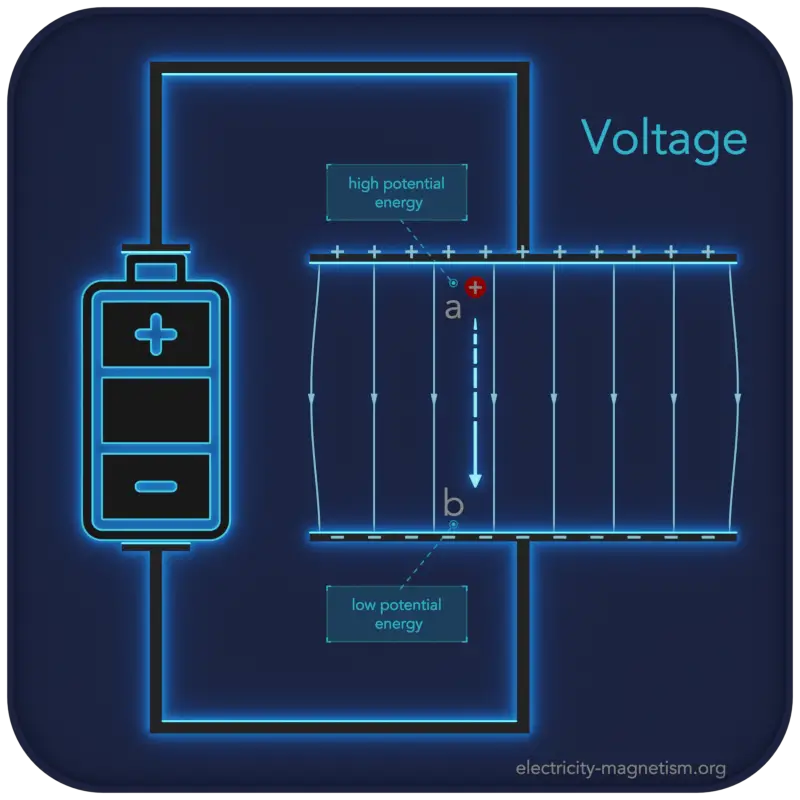30-second summary
Typical Voltage
In physics, voltage is the difference in electric potential between two points.
Voltage, denoted by V, is defined as the amount of work energy needed to move a unit of electric charge from a reference point (a) to a specific point (b) in an electric field.
ΔV = Va – Vb
To help compare different orders of magnitude, the following list describes typical voltage levels.



